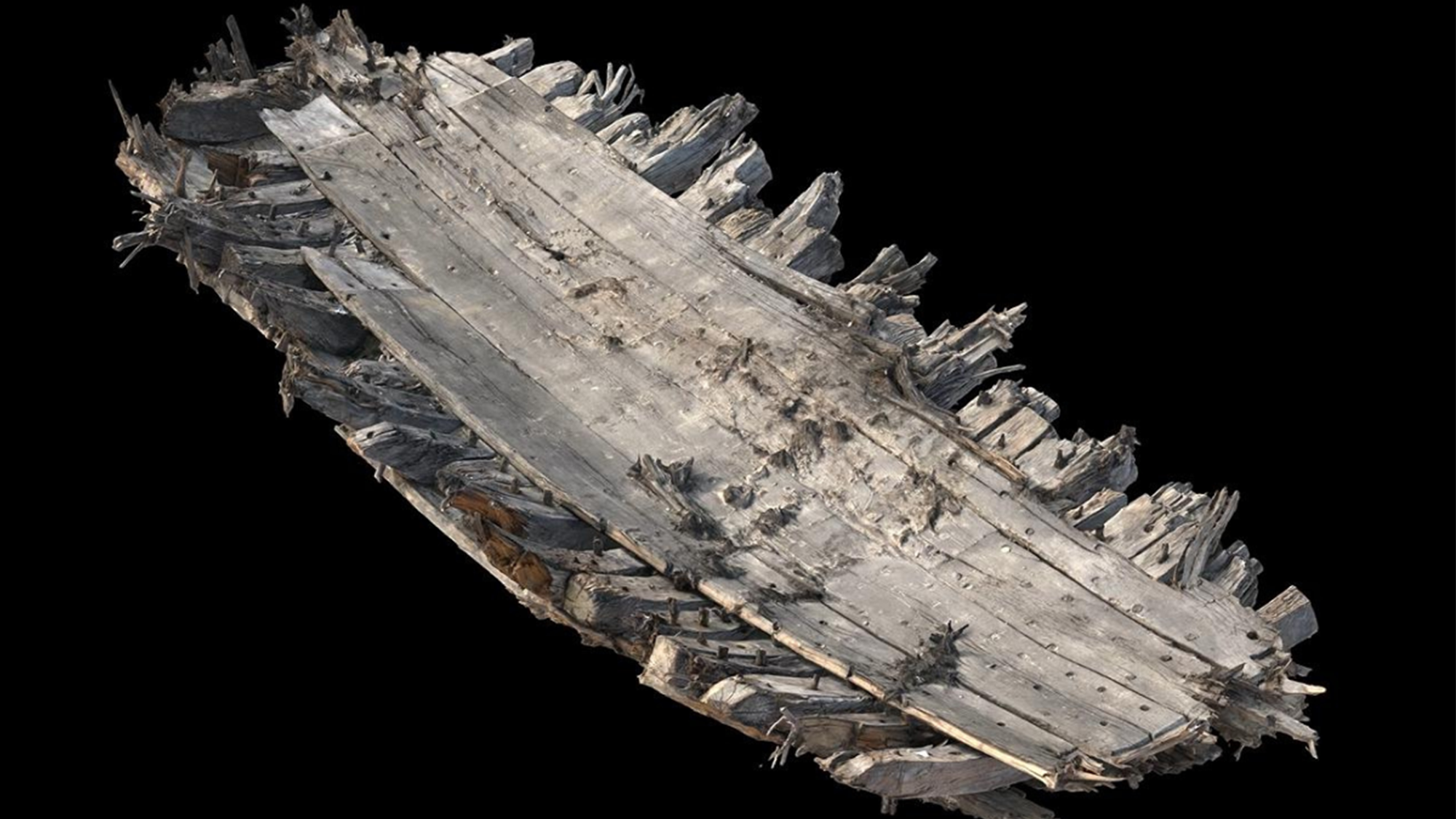

While dredging in the flooded Dungeness quarry in southeastern England, workers from concrete supplier CEMEX UK came across more than just a bevy of rocks. Within the ground were the timbers of a ship that date back to the reign of Elizabeth I. The monarch was Queen of England and Ireland from 1558 until 1603, and is regarded by some historians as one of the nation’s greatest rulers.
During the late 16th Century, England and many other nations in the region were in a trade boom, with routes expanding and the English Channel serving as a major trading route. Today, very few English-built ships that date back to this busy time remain.
[Related: Storm erosion brings 200-year-old shipwreck to the surface of a Florida beach.]
“To find a late 16th-century ship preserved in the sediment of a quarry was an unexpected but very welcome find indeed,” said Andrea Hamel, a Marine Archaeologist at Wessex Archaeology, in a statement. “The ship has the potential to tell us so much about a period where we have little surviving evidence of shipbuilding but yet was such a great period of change in ship construction and seafaring.”

Archaeologists recovered more than 100 timbers from the hull of the ship and dendrochronological analysis was funded by Historic England. The ship was built somewhere between 1558 and 1580 according to the analysis, which also confirmed that it was made from English oak. According to Wessex Archaeology, this timing and material places the ship at a transitional period in ship construction in Northern Europe. Historians believe that this is when ships moved from the traditional clinker construction seen in Viking vessels to frame-first-built ships. This technique is where a ship’s internal framing is built and the planking is added to frames later to create a smooth outer hull. It’s a similar technique to what was used to construct the Mary Rose, a warship that was built between 1509 and 1511, and some of the ships that would later explore and colonize North America.
[Related: Has Captain Cook’s lost ship been found? Maybe.]
The ship was uncovered close to 1,000 feet away from the sea, but experts believe that the quarry used to be closer to the coast. The ship possibly wrecked on the headland or was discarded there at the end of its prime. The discovery presents an opportunity to better understand the development of the shipping, ports, and coast line in this part of the Kent coast.
“The remains of this ship are really significant, helping us to understand not only the vessel itself but the wider landscape of shipbuilding and trade in this dynamic period,” said Antony Firth, Head of Marine Heritage Strategy at Historic England, in a statement.
Air and water can quickly rot wood, so old ships like these need a layer of sediment to protect it. To preserve the ship’s wooden timbers, the team used laser scanning and digital photography to take measurements and photos and once archaeologists complete this work, the timbers will be reburied in the quarry lake so that the remains can continue to be preserved by the silt in the dirt.